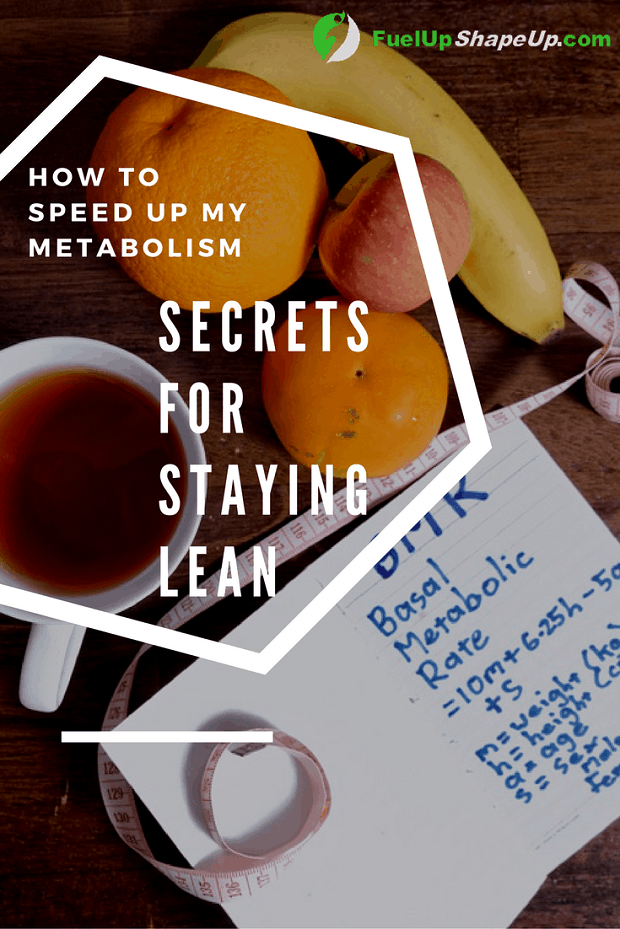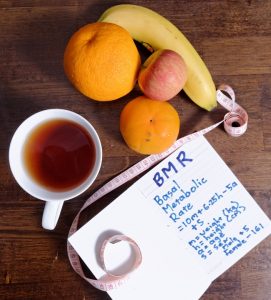Simple Metabolism Boosting Secrets For Staying Lean
Well, it happened. Once I hit my early 20’s the metabolism and hormones I had been relying on to maintain my athletic figure slowly (kind of) melted away and I was left with the body I was scared of getting. Meanwhile, one of my best friends got even skinnier, if that was possible. It all came down to my metabolism, and left me questioning how to speed up my metabolism, in order to slim back down again and get my lean self back! It never occurred to me until I got older that I needed to figure out how to speed up my metabolism again!
Like most others, I wanted to know about metabolism boosters, metabolism secrets and diets that can increase metabolism – I was ready to try everything and anything.
Some Frequently Asked Questions
- What are the best “how to speed up my metabolism” tricks?
- Does my metabolism really decrease as I get older?
- Is this lower metabolism something I’ll just have to learn to live with, whether it’s age related or not?
The bad news is that metabolism does decrease with age. The good news is that it’s something that can be counteracted. Starting around age 25 to 30, most people lose 5 to 10 pounds of lean muscle every decade. And lean muscle is more metabolically active. So simply put, all that that needs to be done to boost our metabolism or at least keep it from slowing down is to focus on a workout program that preserves the lean muscle we have or adds a few pounds of lean muscle to give our metabolism a boost.
Let’s Take A Look At The Four Components Of Your Metabolism
Resting Metabolic Rate (RMR)
 Our resting metabolic rate makes up most of our daily calorie expenditure and includes everything our body needs to do to survive, such as thinking, repairing tissue and anything else it needs to do.
Our resting metabolic rate makes up most of our daily calorie expenditure and includes everything our body needs to do to survive, such as thinking, repairing tissue and anything else it needs to do.
 Thermogenesis
Thermogenesis
Thermogenesis is simply the calorie burning from the act of eating. Our body burns calories when we chew, swallow and digest the food we eat.
Genetic Thermogenesis
 Genetic Thermogenesis is the calories we burn based on our genetic makeup.
Genetic Thermogenesis is the calories we burn based on our genetic makeup.
Physical Activity
 These are the calories we burnfrom physical activity via exercise such as biking, playing tennis, weight training and cardio. For example, if I want to learn how to speed up my metabolism, I need to focus on these different aspects of metabolism: my resting metabolic rate can be increased by adding lean muscle.
These are the calories we burnfrom physical activity via exercise such as biking, playing tennis, weight training and cardio. For example, if I want to learn how to speed up my metabolism, I need to focus on these different aspects of metabolism: my resting metabolic rate can be increased by adding lean muscle.
Will 5 to 10 pounds of added muscle dramatically increase our resting metabolic rate? No, but it will increase it and every little bit helps. In addition, if we add 5 to 10 pounds of muscle, as opposed to losing that much muscle mass each decade, the difference will be quite dramatic over time.
There’s another huge positive metabolism boosting advantage to weight training or high intensity interval training and that’s the post-workout metabolism increase. After an intense resistance training session (or high intensity interval training session), our metabolism will stay elevated for up to 39 hours AFTER the workout! There is a lot of debate on just how big the metabolic boost is when it comes to post-exercise calorie burning but most studies agree that it happensand it’s important. With an intense resistance training session you also burn calories during the workout.
Other Ways How To Boost My Metabolism
Another way I learned how to speed up my metabolism was to increase my protein intake. Our bodies require more energy (i.e. calories) to process protein than it does carbohydrates. So the more protein I consume versus carbohydrates, the more energy I burn.
Your lifestyle will determine how much exercise you need for the metabolism boost you need to start burning fat. If you sit at a computer all day you’re going to need more exercise than someone who does construction work all day. That’s just the way it is.
Here’s a sample metabolism boosting exercise program:
Monday – High Intensity Interval Training
Tuesday – Weight Training Session
Wednesday – Active recovery cardio training
Thursday – Weight Training Session
Friday – High Intensity Interval Training
Saturday – Weight Training Session
Sunday – Rest
Active recovery cardio is low intensity longer duration cardio that you see most people do in the gym. You can also do something simple like taking a long walk outside. This type of session should last 45 – 60 minutes.
Put all these pieces together into a cohesive plan and you’ll attack a slowing metabolism from all different angles.
You’ll not only prevent your metabolism from decreasing as you get older but you’ll increase it, leading to greater fat loss, more muscle and a healthier, sexier, more energetic you.







